When we head out on adventures we make a plan, check the conditions, text a friend, bring the essentials. It’s time we do the same for voting. Make your voter plan and #VoteTheOutdoors.
THRIVE OUTSIDE PROFILE SERIES: Alicia Evans
Alicia Evans
Senior Director of Community Programs, Chattahoochee Nature Center, Atlanta
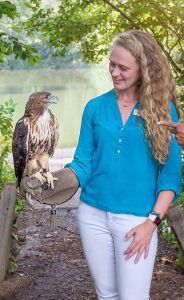
Alicia Evans has been with the Chattahoochee Nature Center (CNC) in the metro Atlanta area since 2007. She grew up in Atlanta and has always loved nature and the outdoors, but it wasn’t until she learned that “environmental education” was something she could study in college that she realized she could turn it into a career.
Evans, senior director of community programs at CNC, is passionate about sharing nature with children – to show them the possibilities the outdoors holds for them, as both a wonderful place to pass the time and as a potential career. We asked her about CNC’s work with the Thrive Outside program and why it’s vital to understand and meet basic safety needs for families as they’re introduced to the outdoors.
Tell us a little bit about what the Nature Center is doing as part of the Thrive Outside program.
Atlanta is such a diverse community, so depending on where you go, access to and awareness of the outdoors and environment aren’t equal. Grants like this allow us to start with awareness and to help children learn that it’s fun to be outside and there are so many things to explore. It’s a great, healthy way to stay active and show them the outdoor opportunities Atlanta has to offer. Our center is right on the Chattahoochee River, which is the major waterway for the city. So in our programming—we host programs on-site and deliver outreach programming to meet them where they are, at youth centers and organizations like the Boys and Girls Club and YMCA – we teach kids how it’s all connected – about the watershed, and its effects all of us and even how we can impact the water we drink at home. We help them understand that they have an opportunity to make a positive impact on the environment as a whole, from the water quality to the birds they hear to the plants they see. The funding from Thrive Outside has really helped us reach these communities, be able to take down barriers in them that exist for access and to bring the outdoors to them.
What drives your passion for this work?
When I graduated from the Warnell School of Forestry at the University of Georgia, I thought that I was going to do research as a traveling wildlife biologist. But I realized that I love my home, Atlanta. I came to CNC as a camp counselor initially, taking eighth and ninth graders out on trips, and then I started as a naturalist, teaching environmental education programs.
What’s fun about teaching people about nature is watching them have that “aha moment” we all love to talk about as environmental educators – the moment where it clicks, when you realize you may have discovered that you want to learn more about the outdoors, about nature. My aha moment was when I was a child, and my grandmother taught me what a chickadee was when we were looking at birds out the kitchen window. My aha about teaching others about nature was when I guided canoe trips in the Boundary Waters with Girl Scouts, gaining a deep appreciation of nature and wanting to share that with people. I understood why we should care about nature, I understood that everything is intertwined and I wanted to challenge myself to translate that message to others.
How have you seen the outdoors impact kids you’ve worked with?
In 2008, I had an opportunity to be a canoe guide on Paddle Georgia, a 100-plus-mile canoeing trip with the Georgia River Network. The Nature Center was tapped to guide a group of underserved students, and it was so hard but so rewarding. Some of the kids didn’t know how to swim – most had never been in a canoe. We worked with them over the week to build their personal strength, teamwork and self-confidence to be comfortable outdoors, skillfully paddle their own canoe and be proud of their accomplishments — all while being able to show them beautiful places across the state. Seeing time with nature change these kids – to give them confidence and an appreciation for the natural world – it’s powerful. It makes me emotional to think about it. It’s why I returned to lead this trip for these kids each year for 10 summers.
It’s fun to see the kids transform from feeling like “I’m not getting in a river” and maybe feeling a little anxious to feeling comfortable being outside, having fun and being so proud they beg to have their picture taken when they’re the one paddling the canoe. It’s amazing – almost a metamorphosis. It speaks to the value of nature and the success of programs like this. When you take away the electronics and all the other distractions and allow a child to focus on themselves and help them grow as a person, I think that’s a real “aha moment,” and it’s where my passion for this type of work comes from.
What are your hopes for what will come out of the Thrive Outside program?
The Thrive Outside program is a three-year program. Having one-time outdoor experiences is important, but this structure allows us to interact with children more deeply, on multiple occasions and to be a part of their growth over time. We allow them to become more comfortable in an outdoor setting, with snakes and bugs, or even hiking on a trail or paddling a canoe. I think it really helps broaden their perspectives and show them that everything has a purpose and that nature can be fun! Every leaf on the ground is important, and if you turn over a rock, you learn that that’s something’s habitat. We want to help them gain a sense of place and to start them on a journey that begins with an awareness of nature and sends them toward being a steward of the earth.
Reaching the kids is super valuable, but we also need to approach this journey from a family level. Often, adults need engagement with and introductions to the outdoors, too, in order to keep that thread alive. I would hope that this program enables the children to encourage their families to join them on the journey and that we can reach adults and help them foster an interest in the outdoors for themselves and their families.
What’s your dream for future generations of children?
My hope, first and foremost, is that there are more opportunities for green space in urban environments and that we prioritize that need for the people who live there. An organization like ours might be in a position to inspire someone to recognize that there’s nature everywhere and then go out and create green space for those in their community. Whether it’s a small plot or a big meadow, it doesn’t matter. We’re noticing it now with the pandemic—people are staying home, and all of a sudden, they’re like, “Oh my goodness. The air is clear, and there are birds singing. Where did all this nature come from?” I’m hopeful that this brings a reminder to everyone that you can’t escape nature; in fact, you need it. And you need to take care of it so that it takes care of you.
We also need to make sure that the outdoors feels safe for everyone. I remember when I was teaching outreach programming in an underserved area in Atlanta where community access and awareness of outdoor recreation are limited. We were at the Outdoor Activity Center in West Atlanta, about to head into the forest on a hike, and there was a child who — you could just tell by looking at him — was nervous. I asked him if he was excited to go hiking, and, I’ll never forget this. He said, “Miss Alicia, I just don’t want to go in there. That’s where the bad people are.” It was a different kind of “aha moment,” one where I realized the privilege I have that allows me to think of going hiking and get excited about it, rather than fear for my general safety. I think about that experience a lot. I regularly remind myself that being outdoors and what it means for me may not mean the same to others. When I am taking others outdoors, there may be fears—both spoken and unspoken—context and previous experiences unknown to me. You’re never going to reach somebody with your message unless their basic needs—safety, food, etc. — are cared for.
A good naturalist, a good interpreter, works to translate something previously misunderstood or unfamiliar—nature, in this case—and helps guide the learner—this young boy—to begin to understand and to have an appreciation of what was previously unknown. It is my hope that Chattahoochee Nature Center can successfully interpret nature for those who join us in our programming and make it fun, better understood, safe and potentially life-changing.
Remembering Mark Satkiewicz
Last week, our industry lost another leader far too soon when Mark Satkiewicz, former OIA board member and former executive for Smartwool, TOMS shoes and Nike, died of a cardiac incident while riding his bike in his hometown of Steamboat Springs, Colorado. Most recently, Mark had co-founded and run the SBT GRVL race, which quickly became one of Colorado’s most popular gravel bike events. Perhaps best-known as the organizer of the annual Smartwool bike ride from Steamboat to Outdoor Retailer, Mark left his mark on the blacktop and the boardroom. A member of the Outdoor Industry Association board of directors from 2013–2017, Mark also had a reputation as a champion of inclusion and collaboration.
We reached out to Mark’s close counterparts on the board and throughout the industry for their personal reflections.
“Mark played a big role in the current focus of OIA and specifically the creativity and idea that became the industry’s call to action through “Together we are a Force.” He deeply believed in the power of working together and building great teams whether at individual brands or across the industry as a whole. He was also at the front pulling along the power of the collective. I am also deeply grateful for the notes of support he sent me during the difficult days of the trade show turmoil. I kept them all.” —Amy Roberts, former Executive Director, OIA; Senior Director of Communications and Corporate Responsibility, The North Face
“I considered Mark one of my mentors….always available to listen and offer perspective. I joined the OIA board around the same time as Mark and attempted to emulate how he showed up in the years that followed. He was a great brand builder, industry leader and community enthusiast. In honor of Mark, I am hoping we can all ride our bikes from Steamboat to Denver next Summer.” —Nora Stowell, OIA Board Chair, W.L. Gore
“Mark loved the outdoor industry and was passionate advocate as part of the Executive Committee on the OIA Board. It was a true to pleasure to work with him during his many contributions. He was also tremendously dedicated to his family explaining to Amy and I his decision to leave Smartwool and his role on the OIA Board to be able to provide an important opportunity for his family in California. He will be dearly missed.” —Gordon Seabury, CEO, Toad&Co; past OIA Board Chair
“Mark always provided balance and a level head, and was a pleasure to know and serve on the board with. He always gave sound counsel and was a thoughtful, terrific human. He will be missed by all who had the good fortune of knowing him.” —Jen Mull Neuhaus, Former CEO, Backwoods; Outdoor Foundation Board member; past OIA Board member
“It deeply saddens all of us that Mark’s life was cut so short. He was bigger than life as a business partner, an athlete and a committed activists for all that matters. During his time with us, Mark personified the phrase “a life well lived”. He embodied all that we aspired to be as human beings. Godspeed Mark Satkiewicz.” —Will Manzer, Former CEO, Eastern Mountain Sports; Former OIA Board Chair
“Mark was one of the people I call ‘unintentional mentors.’ As a small business owner, it was invaluable for me to glean little pearls of wisdom from him during OIA board meetings, after-meeting dinners, and hallway conversations. I remember asking him for advice in structuring management reviews, and he sent me the template he had developed at Smartwool.
More importantly, his kind and generous nature, his affability, and his passion for the outdoors was an inspiration to myself, as I am sure it was for a thousand other people. The world was and will continue to be better because he was in it, and will be greatly diminished by his absence. —Darren Bush, Owner, Rutabega Paddlesports; former OIA Board member
“This is such sad news. I didn’t know Mark well, as I met him during my time on the OIA Board. As a member of the board and a leader among the outdoor industry, I found Mark to be open- minded, innovative and a creative thinker. He was always pushing the elements of the industry for the future and spearheading ways to bring more participants and diversity to the incredible activities of the outdoors. He will be missed and leaves us to continue the journey.” —John Lacy, CEO, Burton, former OIA Board member
Donations can be made to the Mark Satkiewicz Memorial Fund, which will provide gear and resources to Steamboat Springs youth who may not otherwise be able to participate.
You can read obituaries about Mark at Bicycling.com, SGB Online and SNEWS.
Increase in Outdoor Activities due to COVID-19
Are your local parks and trails far busier than usual? Is it harder to find a trailhead parking spot — not to mention new bikes, hiking boots and camping gear? It’s not your imagination. New data shows COVID-related impacts to participation in April, May and June of 2020. Americans have flocked to outdoor recreation amid COVID restrictions, as the data from OIA indicates.
- Americans took up new activities in significant numbers in April, May and June of 2020. Among the biggest gainers were running, cycling and hiking.
- Walking, running and hiking were widely considered the safest activities in which to participate.
- Among the five activity segments measured (team, fitness, outdoor, individual and racquet) outdoor saw the lowest impact due to COVID shutdowns, as just 34 percent of respondents said they could not participate in outdoor activities due to pandemic restrictions. Team sports were hardest hit at nearly 69 percent, followed by racquet at 55 percent.
- Urban participants flocked to outdoor activities: Running, bicycling, day hiking, bird watching and camping participation all rose noticeably among urban respondents since March shutdowns.
- Looking at April, May and June of 2020 versus the same period in 2019, unweighted participation rates for day hiking rose more than any other activity measured, up 8.4 percentage points.
This monthly data will be rolled into a full-year participation study to be published in 2021. The annual study starts with a nationally representative panel of over 1 million Americans and features responses from over 18,000 people ages 6 and older. The study currently includes 122 separate sports, fitness and recreational activities.
THRIVE OUTSIDE PROFILE SERIES: Lexus Morrow
Lexus Morrow
Youth Programs Assistant Coordinator, Outdoor Outreach, San Diego
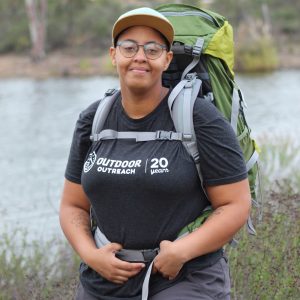
Lexus Morrow was no stranger to Outdoor Outreach, an organization that gets San Diego kids into the outdoors, when she joined its staff last year: She went through the program herself when she was in high school, and ultimately built her career off of the passion for outdoor education she fostered with them. Program leads at Outdoor Outreach brought her rock climbing and surfing and gave her access to places that were previously unreachable to her, without a car, in a city where a 15-minute car ride to the beach can take hours by bus.
As the country looks to quickly make fundamental changes to access and inclusion for BIPOC across the board, Morrow says creating more equitable access to the outdoors isn’t just important, it’s urgent. “Get people back into nature, and I think you get people back into the root of who they are,” she says.
We asked Morrow about her experience with Outdoor Outreach and her hopes for the tens of thousands of students that have gone through its programs.
What was your experience with Outdoor Outreach like?
It was basically my introduction to the outdoors. I was in foster care from basically when I was an infant until I was about 10 years old, and in those 10 years, I was very much in the outdoors, in the backyard, riding my bicycle. I was a kid that played in the dirt outside of our house, or in a park. But when I want back to live with my mother after I was 10, I lost that innocent connection with the outdoors.
I was very much an antisocial kid, very isolated—I always had my head in a book, wanting to get through school as fast as possible, so I can go off to college and get away from everything, that I didn’t really think about doing anything fun. In 10th grade, a teacher kind of pressured me into joining Outdoor Outreach—she told me she’d give me extra credit on a few assignments if I went.
It’s amazing how easy trust comes, in these activities, in the outdoors. I wasn’t a trusting kid, but it was easy because these people from Outdoor Outreach were there. They were really focused and really passionate about making sure me and the other students with were having fun, that we were eating right, that we were drinking. They were all about “challenge by choice,” so we could sit out or stay on the beach and play and make sandcastles.
They weren’t expecting anything out of us, just to be there. I hadn’t had that in a long time in my life. I think that’s really what kind of changed me, as a person. Having someone just to be there without any preconceived notions about me, just wanting me to be happy.
How have you seen students respond to programming?
As a kid who was once in these programs, I can say that it’s a dramatic difference. One student I talk about all the time came in and was like, “I’m never going to rock climb.” And then she got on the rock climbing wall and didn’t want to get down. She did all four routes and then rappelled, and it was the funnest thing she could do. Another student was really afraid of heights. He managed to get up the wall and told me that some parts were difficult and he wanted to stop, but he kept going. And he said he could take that into his life, how he’s really bad at school but knows he can do it now because he rock climbed. It was a physical manifestation of something he didn’t think he could do, and so he said, “If I can do this, then I can totally finish school.”
Another student was really depressed. She came to our programs and was smiling and laughing and saying she’s really happy that she came. Kids tell you that they found their best friend, that they found an activity that they love. You see smiles and joy on the faces of kids who, when they first came in, they were closed off and didn’t want to talk to anybody and they were afraid that they would be judged by what happened in the past or what they did or their mental health issues. It’s just amazing. In eight weeks, we see such a remarkable change in these kids. It’s like looking at totally different children.
What are your hopes for the students you work with?
I hope they realize that what we’re giving them isn’t something that should have ever taken us to give it to them. That this is out there, and it’s theirs, and if they want it that they can go get it.
As much as these activities and these people are there for them, nature is also there for them, and it can be as calming and as healing as they need it to be. It’s an amazing place. It’s an amazing resource that people can use to really take control of their lives, and of their future.
It really should be something that’s there every day, that they have access to, and that they can say yes or no to. But they’re being told that they don’t have access to it, and I just want to be able to make sure that they get to these places they see on TV. These are our places. It’s not the people on TV’s place; it’s ours. And we have just as much right to it. We just have to figure out a way to give them access to it, when it should have already been given to us in the first place.
What changes can we work toward in the near future to increase access to the outdoors?
I think we need to get knowledge to people about the places they can go to recreate. Here’s where they can go to rock climb, or take beginner classes in swimming, and make sure that the information is everywhere so people can see it.
Another big thing is transportation. I never would have been able to get to the beach or anything like that, or do any of these things, if I had to get there myself. Transportation is huge.
I live in San Diego and I’m like 15 minutes by car from the beach, but it takes about three hours by bus to get there. You go the long, long way around, and most bus stops aren’t in front of the beach, they stop like a half a mile from the beach.
So if you have kids, or a car seat, or anything like that, and you want to take your family, and you don’t have a car, then you’re walking your kids down the street from the bus stop, lugging all of your stuff, your food, your water, your toys, your umbrella, all that, to get to the beach for a few hours of fun. And then you have to get back on the bus, for another two-hour journey home. The payoff isn’t worth what you have to put into it. So people don’t go. What’s the point of me going to sit on a beach for two hours if I have to spend four hours getting there? If you want to improve access, then the transportation needs to be there.
We also need to increase awareness that, for some people, the outdoors isn’t somewhere that they see themselves. That was a big thing for me—if I see someone who looks like me, I’m far more comfortable being in the outdoors. We need to make sure that if we’re going to get people outdoors, we get them outdoors in a diverse setting, so they’re not the only Black kid in a group of Asians or in a group of white people.
Why is it so urgent to increase access?
It should be here already. It’s so important because it should already exist, and it doesn’t. I think it’s important that some people don’t know about these places and these spaces, and they don’t know that they’re allowed to go. It’s not fair, and really we have seen over generations and decades how much we have lost, in terms of mental, physical, and emotional health. Nature makes healthier people, it makes better people and stronger people. And it makes a stronger planet.
We’ve lost so much of the planet—animals, people, generations of kids, as adults, with diabetes and suicide and mental health issues and physical issues. I think it really stems from the fact that we have lost our contact with the world around us, and because we don’t have the equity of being in these places. If you don’t go to these places, why the hell do you care about what happens to them? If what you’re thinking about is making rent and getting food on your table and you’re living with that much stress and anxiety and fear every day, of not being able to put food on the table, who cares about the koalas or the pandas or lions that are dying. We’ve become so focused on trying to live every day and survive every day that we’ve forgotten what living looks like.
BIG NEWS: Senate passes the Great American Outdoors Act
GREAT AMERICAN OUTDOORS ACT PASSES SENATE 73-25. ON TO THE HOUSE.
Today, we’re reaching out with good news. The Great American Outdoors Act, the legislation to provide full and permanent funding for the Land and Water Conservation Fund and provide funding to begin tackling the deferred maintenance backlog on federal public lands, PASSED 73-25 with overwhelming bipartisan support.
As we take steps toward economic recovery from COVID-19, federal investment in our public lands and waterways is critical to boost local economies, create thousands of jobs and protect and improve our national parks.
As our advocacy efforts transition to the House of Representatives, OIA would like to thank the senators who sponsored, co-sponsored and championed the Great American Outdoors Act, and we also encourage you to thank your senators for their support.
While this vote was an important hurdle to overcome, it does not have the president’s signature yet, so stay tuned. We will reach out again soon with an ask for your engagement with your House delegation.
Thank you for your support, outreach and efforts so far. That GAOA passed the Senate with the majority is a testament to the bipartisan nature of our work and a demonstration of the impact of our industry’s collective voice.
Thrive Outside Profile Series: Ray Rivera
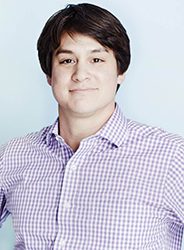
Since he was a kid growing up in Albuquerque, New Mexico, the outdoors have been a passion for Ray Rivera. Through a government career involving a stint at the Department of the Interior and the White House Council on Environmental Quality under the Obama Administration, Rivera has long tied together his two passions: public policy and expanding access to and diversity within outdoor recreation.
Now, on the board for the Outdoor Foundation, Rivera is working on the Thrive Outside Community Initiative, which provides multi-year capacity building grants to diverse communities in order to create or strengthen partnerships between existing local organizations such as schools, Boys and Girls Clubs, YMCAs and nonprofit conservation and outdoor organizations that create repeat and reinforcing positive outdoor experiences for kids and families. We asked for his thoughts on the program’s goals, the importance of diversifying the next generations of outdoorists, and what drives his passion for the project.
What is Thrive Outside trying to achieve?
Thrive Outside is about collective impact. If we’re going to solve the problem of diversifying outdoor recreation, including socioeconomic and age diversity, it’s going to have to come from these communities and these organizations that already have members who are more diverse in many different ways.
Instead of creating new programs—unless that’s what a community wants—we’re focusing on connecting groups that have already been doing the work, so we can multiply their impact. There may be, for example, a kayaking group five miles downstream from a group doing science exploration on the banks of the river, and before they weren’t talking to each other. But now, they’re collaborating and leveraging each other’s expertise, getting each other’s participants to cross-pollinate and get into different aspects of the outdoor world.
What’s your dream for the impact Thrive Outside can have?
We’re working with all these communities and then kind of pulling the quantitative and qualitative resources to keep finding what’s working, what’s not, what the best practices are, and what’s making a difference.
We want to help kids have frequent, repeat experiences—not just experience the outdoors one time. Sometimes people get to go to the Tetons for a week and it changes their life, but in terms of creating lifelong conservatists and outdoor enthusiasts, that usually comes from repeatable and varied experiences.
What was your outdoor experience like growing up?
I grew up in Albuquerque, New Mexico, where we were very fortunate to have public lands all around us. I also grew up fairly low-income. My dad’s side of the family is from New Mexico, and he met my mom when he was stationed in South Korea when he was in the Army. Growing up, we would go camping here or there, but we didn’t spend a ton of time in the outdoors. It was actually my uncle and aunt, who didn’t have kids, who took my brother and I out for moonlight hikes and taught us how to mountain bike. As I got into politics, public policy, and government, I quickly started to realize that we have to do a lot of work to protect these places we love so much. They don’t just take care of themselves. It takes resources, people, and commitment.
How do the outdoors influence your life today?
Politics and government are places where people have a lot of passion, but it’s also very frenetic. It’s a career where you’re carrying two cell phones and checking four email addresses and the news cycle and the spin cycle of the day. Since high school, it’s been part of my life to live this fast-paced, frenetic advocacy, grassroots-organizing lifestyle. Maybe you’re knocking on doors all day, so you get a little bit of fresh air, but you’re not really in nature. Outdoor recreation is the counterpoint to that and allows me to live a balanced lifestyle, so that when I have time away from organizing for something that was so passionate and all-consuming, I can get outdoors and mountain bike or do some skiing and hiking.
What are your hopes for future generations of outdoorists? What does the ideal outdoor world look like for them?
Aside from inclusivity, we need to demystify the outdoors and increase the number of outdoor activities that you can access within close range, especially in urban areas. There are so many ways to be involved in the outdoors, and we have to send that message. The outdoors is for people barbecuing at Sloans Lake in Denver and for people who want to hang off a cliff over a canyon. I think we have to do a better job of messaging that.
The outdoors also needs our protection, love, and commitment to perpetuate it for the next generation. As people get involved with the outdoors, they also need to learn how to impact public policy to protect the outdoors. The outdoors are an avenue for you to get involved with public policy in a way that feels very personal to you. We all feel the difference when we can spend many magical moments in the outdoors, and we know what it means to our life.
OIA Elects One Returning and Four First-Term Board Members
We would like to thank all the member companies who participated in the 2020 election. We are happy to announce and introduce the one returning director as well as the four new incoming directors, who will officially begin their three-year terms at the upcoming board meeting on June 22:
- SCOTT BUELTER, CEO – Ascent360
- TRINA FORNERETTE, Brand Manager – Waypoint Outdoor
- ALISON HILL, CEO – LifeStraw
- JENNIFER MCLAREN, President & CEO – Smartwool
- KEVIN WINKEL, Founder & GM – Wayward Collective
FULL BIOS BELOW
We appreciate the continued service of the existing directors and look forward to bringing on four new directors representing the outdoor industry. It’s more important than ever that OIA represent the breadth of brands, retailers and consumers who love the outdoors.
The OIA board of directors provides guidance for the organization’s overall strategic direction, establishes policies and positions, monitors the association’ financial health, programs and overall performance and prepares the industry and association for the future, ensuring OIA’s success as an organization and for its members. The five directors in the class of 2020 bring the experience, perspectives, skill and diversity the board is seeking, while meeting the criterion of a personal passion for and commitment to outdoor recreation.
[panini-row layout=”row-full” row-width=”large” spacing=”margin-top-40 “]
[panini-column ]
[paniniblock template=”basic/html” attribute-data=”name:template;type:text;label:Block”]
[content name=”html” label=”Raw HTML”]
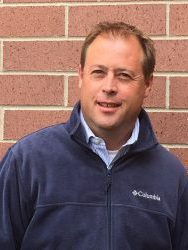 Scott Buelter
Scott Buelter
Ascent360, CEO
What relevant business or industry experience would you bring to the OIA Board to help achieve and promote OIA’s work?
As the leader of a software company that serves the outdoor community, Scott brings a unique mix of skills to the OIA board. His deep love of the outdoors brought him and his family to Colorado over 15 years ago. Since then, he has worked with the outdoor community to help small outdoor companies become successful. His passion for the environment and his interest in spending time outside – skiing, hiking and running – have helped Scott see that there is a balance the industry must strike between the consumer, the environment and business. Scott has broad experience in many industries, including manufacturing, software, retail and travel – all which OIA supports. This perspective helps him align with the sometimes conflicting goals of the industry.
Background:
Scott Buelter is a seasoned executive with broad experience, both inside and outside of the outdoor industry. Currently the CEO of Ascent360, a venture capital-backed software company, Scott works closely with outdoor brands, resorts, retailers and event management companies, such as Smartwool, Thule, Ragnar Relay and Alterra Mountain Company. In this role, Scott leads a team that helps outdoor companies better understand their end consumers and effectively communicate with them.
Over the past 15 years, Scott has been gaining a unique perspective of the outdoor industry by understanding the data that supports the industry – retail sales data, consumer habits and ecommerce / web behavior. With Scott’s breadth of knowledge in both the outdoor industry and technology, he provides cutting-edge, data-driven marketing to an industry that has not traditionally utilized those capabilities. Prior to his work at Ascent360, Scott ran the CRM practice for the Leisure Trends Group and worked with many outdoor companies across the globe. Scott has also been responsible for the digital marketing and data analysis at Merkle and Experian, after helping another software company grow from a startup through IPO. Outside of the outdoor industry, Scott has experience working with global brands including Nike, Disney, Royal Caribbean, Loews Hotels, American Express, Samsung and many others. Scott holds his MBA from the University of California at Irvine and has studied at the University of San Diego and the London School of Economics, as well as IES in both Berlin and Vienna.
[/content]
[/paniniblock]
[/panini-column]
[/panini-row]
[panini-row layout=”row-full” row-width=”large” spacing=”margin-top-30 “]
[panini-column ]
[paniniblock template=”basic/html” attribute-data=”name:template;type:text;label:Block”]
[content name=”html” label=”Raw HTML”]
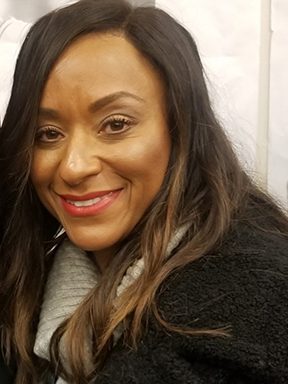 Trina Fornerette
Trina Fornerette
Waypoint Outdoor, brand manager
What relevant business or industry experience would you bring to the OIA Board to help achieve and promote OIA’s work?
I have 10+ years in the Outdoor Industry at a management level setting strategies, leading teams and working cross divisionally and externally to achieve the goals. I’m solutions driven with a willingness to have tough conversations to look for resolve. With my passion of the evolution of the outdoor industry, I led the transformation of the Apparel Division at REI, influencing internal partners and external brands to align to the strategy and partner through the execution of it.
Background:
In April 2019, Trina joined the Waypoint Outdoor Agency as the Brand Manager of Smartwool. In this role, she’s responsible for partnering with the Smartwool brand on the assortment direction and positioning in the marketplace to achieve sales goals for Key and Specialty accounts. Her responsibilities also include driving the partnership of key accounts, such as REI, and representing their business needs to the Smartwool brand and leading/developing a high-performing sales rep team to deliver on sales targets. As part of the leadership team for Waypoint, she oversees P&L and makes business decisions in partnership with co-brand managers and the CEO to maximize profitability for the agency, as well as oversee day to day office needs to ensure efficient operations.
Prior to Waypoint, she was with REI for 9 years. There, she was a category merchandise manager of footwear and most recently the senior category merchandise manager of womenswear. During her tenure, she was responsible for developing department buy strategies and leading cross- divisional partners and external brand partnerships to achieve financial goals. More notably, as the senior category merchandise manager of womenswear, she led, influenced, and collaborated the transformation of the apparel strategy. This included launching plus sizes, launching the partnership with the Athleta brand, leading an evolved/transformed private brands assortment architecture, implementing a quarterly and transitional buy strategy, leading the creation of a merchandising playground to help inform the buy and create the visual experience, and leading the execution of the broader apparel strategy with the visual and marketing teams.
Prior to REI, she was with Eddie Bauer for 12 years in varying buying roles and launched her career at Nordstrom, there for nine years.
In her free time, she enjoys hiking, traveling, spotting trends and spending time with family.
[/content]
[/paniniblock]
[/panini-column]
[/panini-row]
[panini-row layout=”row-full” row-width=”large” spacing=”margin-top-50 “]
[panini-column ]
[paniniblock template=”basic/html” attribute-data=”name:template;type:text;label:Block”]
[content name=”html” label=”Raw HTML”]
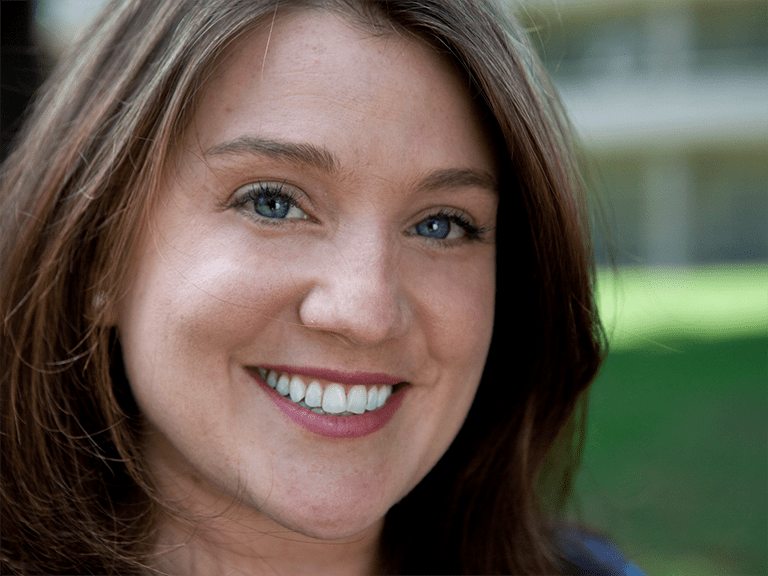 Alison Hill
Alison Hill
LifeStraw, CEO
What relevant business or industry experience would you bring to the OIA Board to help achieve and promote OIA’s work?
As the leader of a humanitarian company, I bring a unique perspective on social impact business models that can provide impact at scale and the financial acumen to leverage social impact as a revenue driver in a retail business. As a female brand leader in technology innovation and product design for the outdoor industry, I bring an under-represented perspective to help the industry design for their female consumers.
Background:
Alison Hill is the CEO of LifeStraw, a global company providing safe water through technological innovation and product design. For the last 10 years, Alison has built the LifeStraw brand through retail, humanitarian water programs and emergency preparedness and response.
Under Alison’s leadership, the LifeStraw business has grown more than 80% in the last five years in the outdoor sports retail markets, and in 2019, the company entered the household market. The growth of Lifestraw’s retail business drove the success of one of the largest private investments providing kids with safe drinking water. As of 2019 this program has provided over three million kids with safe drinking water for a year through its giveback initiative.
Alison began her career in Zambia, focused on the HIV/AIDS epidemic, aiming to gain experience in infectious disease. After four years leading a staff of 100, caring for more than 600 patients at any given time, she concluded that she could make a greater impact by influencing public health. She returned to the U.S. and got a master’s in public health and an MBA from John’s Hopkins University.
In 2009, Alison joined Vestergaard, LifeStraw’s previous parent company, focusing on innovative financing for health programs. She spearheaded the first program ever to link carbon finance to safe drinking water – providing water filtration to 4.5 million people in Kenya. In 2012, Alison was named managing director of Vestergaard’s LifeStraw business. She drove LifeStraw’s entry into retail but kept the brand true to the company’s humanitarian DNA. In 2020, she was officially named CEO.
At 40, Alison has emerged as one of a handful of women business leaders successfully managing an international brand that brings together retail, social good and public health, and she has infused the company with female leaders and diversity at all levels of LifeStraw.
[/content]
[/paniniblock]
[/panini-column]
[/panini-row]
[panini-row layout=”row-full” row-width=”large” spacing=”margin-top-30 “]
[panini-column ]
[paniniblock template=”basic/html” attribute-data=”name:template;type:text;label:Block”]
[content name=”html” label=”Raw HTML”]
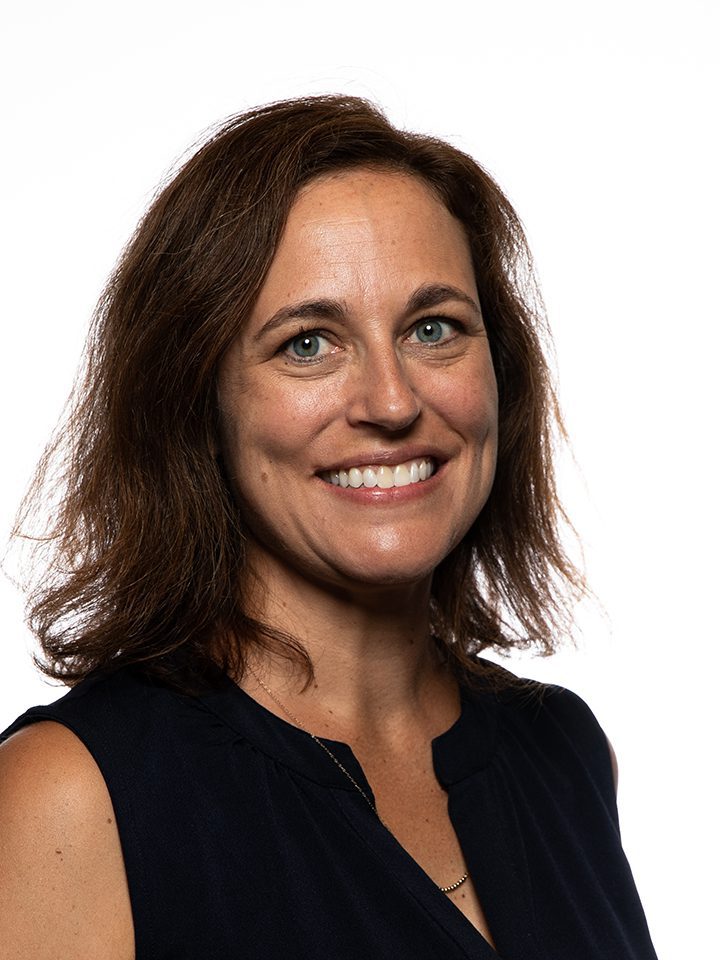 Jennifer McLaren
Jennifer McLaren
Smartwool, president & CEO
What relevant business or industry experience would you bring to the OIA Board to help achieve and promote OIA’s work?
I have spent the majority of my career in financial leadership positions responsible for strategic planning, financial planning and driving execution to achieve strategic and financial goals. I have a passion for doing good (for the world) and doing well(financially). This philosophy was instilled in me early in my career at Timberland where we focused on using our business platform to make a positive impact in the world through community service, corporate social responsibility efforts and environmental protection platforms. This passion has helped me to evolve Smartwool to use our business platform for good (focusing on providing access to the outside for everyone and protecting our natural environment) that is in turn good for business. My financial and strategic leadership also helps the brand to stay focused on sustainable business growth initiatives. I believe my skillset is an important match for the OIA Board as we continue to focus on the strategic pillars of OIA, helping to ensure the industry continues to evolve and thrive with the ever-changing consumer and marketplace landscape.
Background:
Jen McLaren is the current president and general manager of Smartwool, located in Steamboat Springs, Colorado. Jen is responsible for the oversight and strategic direction of the Smartwool global brand. She has been with Smartwool for more than eight years as a member of the senior leadership team and chief financial officer. Prior to Smartwool, she served as North America CFO, Timberland®. She joined the Timberland brand in 2003 in the global financial planning and analysis organization. Jen holds a B.S. in business administration from the University of New Hampshire’s Whittemore School of Business and Economics. She began her career in public accounting at Arthur Andersen and then moved into various finance roles in start-ups and SoftBank Capital. Jen is a dedicated outdoor enthusiast and believes that businesses have an obligation to make the world a better place. She is active in the Outdoor Industry Association, Camber, The Nature Conservancy and SOS Outreach nonprofit organizations.
[/content]
[/paniniblock]
[/panini-column]
[/panini-row]
[panini-row layout=”row-full” row-width=”large” spacing=”margin-top-30 “]
[panini-column ]
[paniniblock template=”basic/html” attribute-data=”name:template;type:text;label:Block”]
[content name=”html” label=”Raw HTML”]
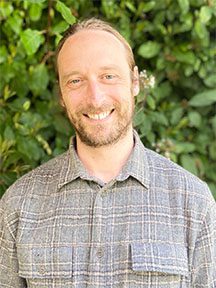 Kevin Winkel
Kevin Winkel
Wayward Collective, founder & GM
What relevant business or industry experience would you bring to the OIA Board to help achieve and promote OIA’s work?
As an OIA Board member, I am excited to bring my passion, experience and commitment to the following:
- Building opportunities for people across all communities through education, access and protection of our natural playgrounds
- Developing long-term, sustainable guides relative to OIA goals to inspire, support and grow participation, conservation and membership
- Collaborating across retail, brand and manufacturing industries and lifestyles to build synergies for win-win-win opportunities
- Connecting with explorers across generations and communities with a shared mindset and removing barriers for participation and advocacy
- Challenging our businesses to adapt and thrive in today’s ever-changing landscape
- Challenging the status quo of retail and driving new perspectives of how to engage communities, drive inspired action and connect the ingredients to inspire participation
- Strong financial balance and goal setting of model forecasting and analytics
- Generational psychographic research of current Millennials, Gen X and Gen Z and beyond
It would be my goal to learn and contribute in any way possible to support the growth of our industry through awareness, policy and good business practices that will aid in the continued growth of a great organization. I believe my experience can bring an additional perspective to an already great group of people to support OIA goals and grow opportunities for explorers of all ages and backgrounds.
Background:
Kevin Winkel is the Founder of Wayward, a lifestyle retail brand with stores in the greater Seattle and Chicago areas. Wayward has been focused on supporting the adventure and creative communities to enrich and enhance participation and growth through exploration since its launch in 2017. Prior to this, Kevin has held global roles for brands like Burton and K2 Sports as well as leading brand, culture, marketing and loyalty initiatives for the North American retailer Zumiez.
Born and raised in Northwestern Montana, Kevin grew up living on a llama farm surrounded by the beauty of Glacier Park and Flathead lake. In his earlier years, Kevin had a strong eye for photography and has spent years traveling the world and living in places such as Bellingham, WA; Lake Tahoe; Los Angeles; Burlington, VT; and Bend, OR.
Kevin is a graduate of Cal Poly and has served on the SOS Outreach NW Advisory Council as well as a previous participant and supporter of NOLS. Today Kevin lives in Seattle, WA, with his wife Lindsay and two kids, Ruby and Cole.
[/content]
[/paniniblock]
[/panini-column]
[/panini-row]



